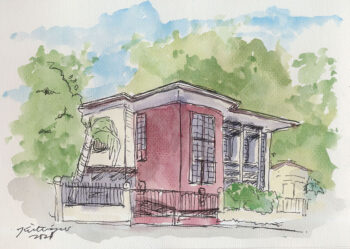QUEZON CITY (MindaNews/23 Sept) — This third of a series of articles anticipating a peace agreement in Mindanao looks at lessons learned from the peace process in Aceh. Subsequent installments will look also al lessons learned from additional places both where peace has succeeded and where it failed.
The Northern Ireland conflict, which sprang from differences between Catholics and Protestants over territorial integrity, ended with the Good Friday agreement, which allowed for a devolved government of sharing power between unionist and nationalist parties. It likewise recognized that Northern Ireland would remain part of United Kingdom as long as this remains to be the sentiment of the majority of the populace.
The warring interests in Aceh, however, goes down to the time of colonization period of a foreign power. While Indonesia was brought under the Dutch control, the Acehnese were able to protect themselves against the Dutch colonial rule. At the time, however, when the Netherlands had ceded sovereignty back to Indonesia, administration of Aceh was similarly handed over to the mother state. This was unacceptable to many Acehnese. Since then, historical disagreement on sovereignty, exploitation, and the control over Islamic law had been the constant battlecry of the Acehnese.
In 1978, the state under President Suharto’s leadership, led an extensive drive to disband the Free Aceh Movement, a separatist group fighting for Aceh’s independence from Indonesia. Eleven years later, Suharto declared Aceh a Military Operations area. During this period, several cases of worst human rights abuses were recorded. The Cessation of Hostilities Agreement which aimed at a ceasefire collapsed due to GAM’s refusal to disarm their members as well as Indonesia’s resistance to withdraw its troops in the Aceh region. In 2003, President Megawati placed the region under Martial Law.
The election of Yudyohono as president in 2004 gave a new gleam of hope for the Aceh conflict. It was not however until the Indian Ocean tsunami hit badly much of Aceh in December 2004 that the secessionist group and the government of Indonesia hurriedly sat together to finally realize the recovery process.
In 2005, the GAM and the government of Indonesia, pursuant to the Helsinki Negotiations came up with a Memorandum of Understanding. The MOU contained important provisions concerning the future political relationship of Aceh and the national government, the powers of the Acehnese government, GAM demobilization, demilitarization, and monitoring.
The first of the five rounds of the negotiations rest on the Indonesian government’s insistence for GAM to relinquish claims for independence. In the succeeding rounds, the parties agreed on the concept of self-governance. One of the critical issues that had to be settled during the peace negotiations was the establishment of local political parties by members of the GAM. Wary about the possible faction that this move might cause, the government resisted such request. However, the decision to resolve the matter had been eventually given to the president who approved of such condition.
The agreement provided that the “government will first assist in the establishment of “Aceh-based political parties that meet national criteria” and allow candidates nominated by the population to run for executive positions in local elections in April 2006. The government will also, in 12 to 18 months, “create …the political and legal conditions for the establishment of local political parties in Aceh in consultation with the parliament.” This was indeed a major concession on the side of the government.
The Aceh conflict resolution was successful because it had clear provisions– Aceh was to abandon any claim for independence from the Indonesian nation state but work on self-autonomy within the state. It was evident that both parties were keen on resolving the issues. They had shown political will to reach an agreement that would finally put an end to the Aceh conflict. On one hand, GAM had turned over its weapons and disbanded its military arm by late 2005. On the other, the Yudhoyono administration vowed reform and modernization of the Indonesian military. Another factor that has contributed to the success of the peace process was the installment of a states-led monitoring group that would look after the implementation of the provisions in the agreement. Discussions and resolutions of issues were done regularly on a provincial and district level. This gave the local leaders some sense of ownership and accountability. In the same breath, it allowed for the resolution of local problems at the local level, an excellent way of putting off fire right away before it goes haywire.
According to the U.S. Institute of Peace Special Report, “remarkable progress has taken place in Aceh in a very short time. The province has changed, peace and stability have been restored, and the lives of ordinary people have improved immensely as they have gained freedom of speech and movement.” (MindaViews is the opinion section of MindaNews. Dean Tony La Viña is a human rights and environmental lawyer from Cagayan de Oro City. He was a member of the Government of the Philippines Peace Panel that negotiated with the MILF from January-June 2010. He is currently the Dean of the Ateneo School of Government. Dean Tony can be reached at Tonylavs@gmail.com. Follow him on Facebook: tlavina@yahoo.com and on Twitter: tonylavs)







